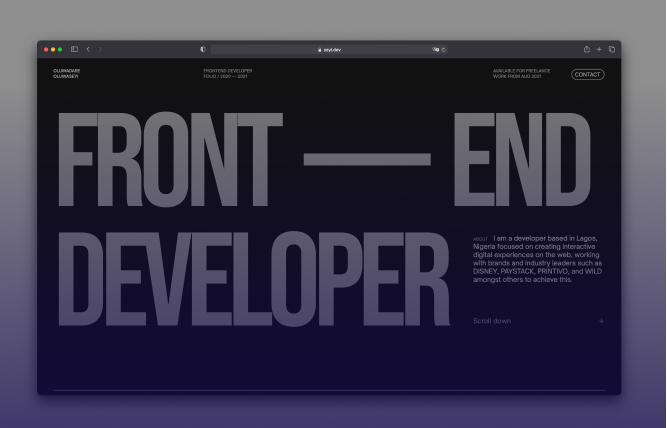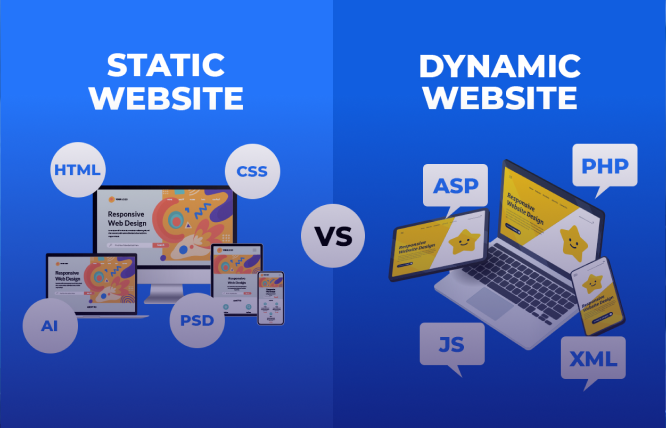Introduction
Front-end development involves the creation of a web application’s front interfaces using tools like JavaScript, CSS, and HTML, and frameworks like Vue.js, Angular, and React. Build tools such as Parcel and Webpack can automate tasks, while version control systems such as Git assist in the managing code changes. Performance optimisation, debugging, testing, and accessibility are vital for successful front-end development.
Front-end development process creates the visible interfaces of a web application. The design and user interface (UI) includes colours, typography, layout, and the overall visual experience.
This blog explores the key tools and frameworks utilised in front-end development.
| Framework/Tool | Description |
HTML | Known as the building blocks of web pages |
CSS | Styling elements on web pages |
JavaScript | Includes functionality and interactivity |
Angular | A detailed JavaScript framework for building web applications |
React | A famous JavaScript library for building user interfaces |
Vue.js | A progressive JavaScript framework for building user interfaces |
Webpack | A module bundler for modern JavaScript applications |
Git | A version control system for managing code changes |
Parcel | A zero-configuration web bundler |
GitHub | A famous platform for hosting Git repositories |
These tools are some of the popular front-end development tools, helping front-end developers build engaging user interfaces. Being hands on with front-end developing languages will help you scale dev
HTML (Hypertext Markup Language)
HTML serves as the backbone of web pages, structuring content and defining its presentation through elements and attributes.
Here is a quick look at some commonly used HTML elements:
- <html>: The root element that wraps the entire HTML document.
- <head>: Contains metadata like the page title, styles, and scripts.
- <div>: A versatile container for organising content and applying styles.
- <p>: Represents paragraphs of text on the webpage.
Mastering these foundational elements is key to creating well-structured and functional websites!
HTML is widely considered to be the foundation of web pages. It defines the content and structure of a webpage using attributes and elements. Let’s go through some of its common elements:
- <html>: This is the root element of an HTML document
- <head>: This has the metadata about the webpage
- <div>: This is a generic container element
CSS (Cascading Style Sheets)
CSS is the go-to tool for styling HTML elements, giving you control over the visual appearance of your web pages. From layout and fonts to colours, CSS brings your designs to life.
Here are some commonly used CSS properties:
- color: Sets the colour of the text.
- font-family: Specifies the font for text.
- font-size: Defines the size of the text.
- background-color: Determines the background colour of an element.
JavaScript
JavaScript is the key to making web pages interactive and dynamic. It allows you to handle user input, create engaging elements, and communicate with servers seamlessly.
Here are some core features of JavaScript:
- Variables: Store and manage data dynamically.
- Functions: Reusable blocks of code for specific tasks.
- Objects: Collections of properties and methods to represent data or functionality.
- Events: Actions like clicks or hovers that trigger specific JavaScript behaviour.
With JavaScript, your static web pages transform into rich, responsive experiences!
This programming language adds interactivity to web pages. You can use it to create dynamic elements, communicate with the server and handle user input. Let’s see some common JavaScript features here:
- Variables: Stores data
- Functions: Reusable blocks of code
- Objects: Groups of methods and properties
Front-End Frameworks
Front-end frameworks provide a structured approach and essential tools to simplify and accelerate web development. They come equipped with features like:
- State Management: Efficiently handle and update application data.
- Routing: Seamlessly manage navigation between pages or views.
- Components: Reusable UI elements for faster development.
Let’s talk about some of the popular front-end frameworks:
- js: A progressive JavaScript framework offering flexibility and simplicity with a straightforward API, perfect for building adaptable user interfaces.
- Angular: A robust framework featuring two-way data binding, dependency injection, and a well-defined structure for creating scalable web applications.
- React: A highly popular library that uses a component-based architecture and virtual DOM to create efficient, interactive user interfaces.
Building Tools
Build tools automate essential tasks like minification, bundling, and transpiling, streamlining development and boosting performance.
- Parcel: A user-friendly, zero-configuration bundler that simplifies setup and usage for faster development.
- Webpack: A powerful and versatile module bundler, ideal for managing and optimising complex front-end projects.
With these tools, developers can focus on creating efficient and high-performing web applications.
Version Control
Version control is essential for tracking code changes and working effectively with teams.
Here are some key tools:
- Git: A distributed version control system that tracks code changes, enabling you to manage your code history and collaborate seamlessly.
- GitHub: A popular platform for hosting Git repositories, fostering collaboration, and sharing code with developers worldwide.
These tools ensure your projects stay organised and adaptable, even in complex development environments.
Testing & Debugging
Implementing effective testing and debugging practices is crucial for maintaining high-quality front-end code.
- Integration Testing: Examines how different components interact and function together within the application.
- Unit Testing: Focuses on testing individual functions or components in isolation to ensure they perform as expected.
- Debugging Tools: Utilise browser developer tools and specialised debugging utilities to identify and resolve issues quickly.
Performance Optimisation
Optimising front-end performance is essential to providing a smooth, fast user experience.
- Caching: Leverage server-side or browser caching to significantly reduce load times.
- Image Optimisation: Compress images to reduce file sizes, speeding up page load times without sacrificing quality.
- Code Optimisation: Write efficient JavaScript and reduce HTTP requests to improve overall performance and responsiveness.
Accessibility
Making your front-end code accessible is crucial to providing an inclusive experience for all users, including those with disabilities.
- Accessibility Testing: Use tools and techniques to assess your website’s accessibility and ensure it meets necessary standards.
- WCAG: Follow the Web Content Accessibility Guidelines (WCAG) to ensure your web content is accessible to a wider audience, including people with disabilities.
Concluding Remarks
Front-end development is rapidly evolving, with new tools and frameworks being introduced frequently to enhance the development process.
If you are looking for exceptional front-end development, connect with FuturByte and partner with a team of experts who are dedicated to delivering exceptional user experiences.
We a have strong grip on the latest frameworks like Angular, React, and Vue.js, as well as proficiency in building Progressive Web Apps, Single-Page Applications, and custom UI designs using Bootstrap and Material UI. We ensure your web applications are both visually appealing and functionally robust.
Frequently Asked Questions
Vue.js, Angular, and React are some of the most popular front-end frameworks.
Custom web design presents you with unique, tailored solutions, whereas pre-built templates offer faster, more cost-effective options.
Front-end developers utilise techniques like Fetch API, AJAX, or libraries like Axios to make requests and handle responses from APIs.
Consider factors such as performance requirements, team expertise, project complexity, and community support.
Have questions or feedback?
Get in touch with us and we‘l get back to you and help as soon as we can!




